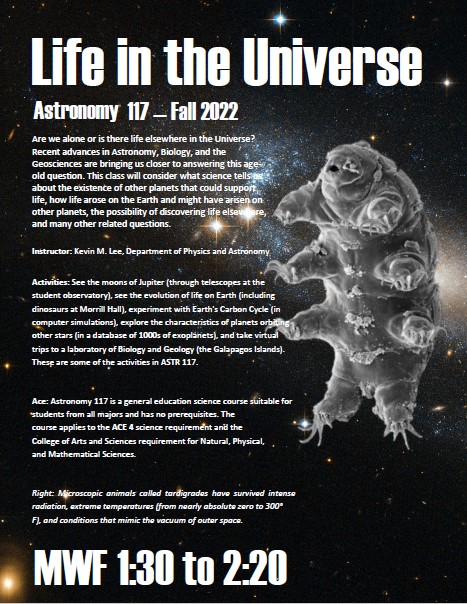
ASTR 117: Life in the Universe
Fall 2022
MWF 1:30-2:20
Are we alone or is there life elsewhere in the Universe? Recent advances in Astronomy, Biology, and the Geosciences are bringing us closer to answering this age-old question. This class will consider what science tells us about the existence of other planets that could support life, how life arose on the Earth and might have arisen on other planets, the possibility of discovering life elsewhere, and many other related questions.
Instructor: Kevin M. Lee, Department of Physics and Astronomy
Activities: See the moons of Jupiter (through telescopes at the student observatory), see the evolution of life on Earth (including dinosaurs at Morrill Hall), experiment with Earth's Carbon Cycle (in computer simulations), explore the characteristics of planets orbiting other stars (in a database of 1000s of exoplanets), and take virtual trips to a laboratory of Biology and Geology (the Galapagos Islands). These are some of the activities in ASTR 117.
Ace: Astronomy 117 is a general education science course suitable for students from all majors and has no prerequisites. The course applies to the ACE 4 science requirement and the College of Arts and Sciences requirement for Natural, Physical, and Mathematical Sciences.
Right: Microscopic animals called tardigrades have survived intense radiation, extreme temperatures (from nearly absolute zero to 300°F), and conditions that mimic the vacuum of outer space.